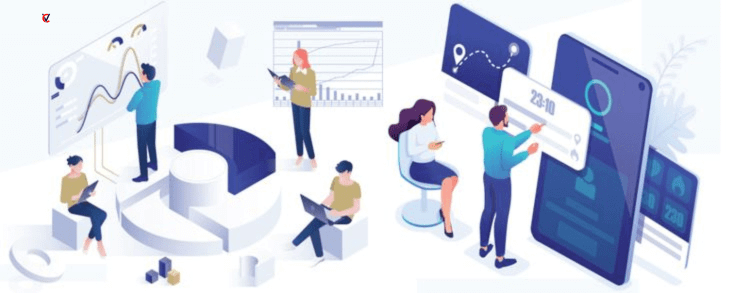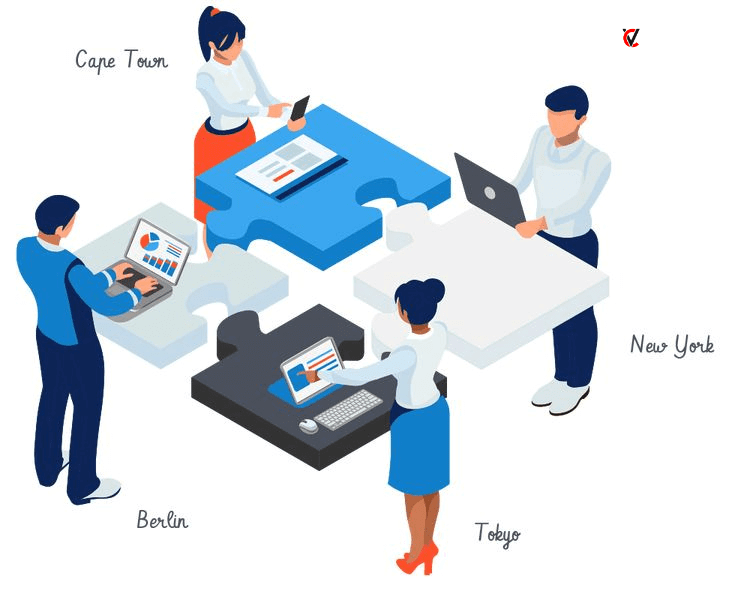In the modern era, digital transformation is not just a technical shift it is a fundamental reshaping of economic logic. The forces of connectivity, automation, real-time data, and shifting consumer expectations are dismantling traditional business assumptions. Companies must evolve from static value chains to adaptive digital ecosystems. This transformation goes beyond implementing new technologies it requires reimagining value creation, operational processes, customer relationships, and market positioning in a hyperconnected, data-rich world.
From Ownership to Access: The Rise of Usage-Based Economies
Modern consumers are less focused on possession and more concerned with flexibility, convenience, and utility. This paradigm shift has led to the growth of usage-based and subscription models that prioritize continuous engagement over one-time sales. It also transforms how businesses measure success from transactional revenue to lifetime value and retention metrics.
This transition requires businesses to build capabilities for real-time service delivery, customer usage analytics, and scalable infrastructure that supports dynamic access rather than static ownership. The economic model must now consider customer experience across the lifecycle, with emphasis on renewals, upgrades, and service consistency.
Data as the Strategic Core of Decision-Making
Data is no longer a byproduct of operations; it is a central asset. From market analysis and behavioral forecasting to supply chain optimization and dynamic pricing, data-driven insights are enabling businesses to act with precision and foresight.
However, deriving value from data requires more than analytics tools. It demands robust data governance, clean and unified data architectures, real-time integration capabilities, and the organizational will to embed insight into every level of decision-making. Furthermore, as data becomes strategic, it brings increased exposure to privacy, security, and ethical risks necessitating a balance between innovation and compliance.
Platforms, Ecosystems, and Value Co-Creation
Business models are evolving away from linear supply chains to multi-sided platforms and ecosystems. Companies are increasingly positioning themselves as enablers creating infrastructure that facilitates interactions among diverse participants, from customers and suppliers to developers and partners.
This model thrives on network effects, where the value of the platform increases as more participants engage. Success depends on governance structures, openness to third-party innovation, seamless interoperability, and shared standards. In this economy, competitive advantage is no longer defined solely by internal capabilities but also by the strength of the surrounding ecosystem and the value it co-creates.

Organizational Agility and the Remote-First Operating Model
Agility is now a prerequisite for survival. Businesses must adapt rapidly to changing market signals, economic disruptions, and technological advancements. This has led to flatter hierarchies, modular workflows, and digital operating models that enable decentralized decision-making.
Remote and hybrid work have permanently altered talent strategies. Geographic flexibility allows for broader talent pools, but it also necessitates cultural cohesion, secure collaboration environments, asynchronous communication structures, and digital productivity measurement. Organizational design must shift toward outcome-driven models that prioritize results over hours logged or physical presence.
Embedding ESG into Core Strategy
Environmental, Social, and Governance (ESG) considerations are now integrated into strategic planning, risk management, and investor relations. Businesses are expected to define purpose beyond profit, creating sustainable impact while delivering financial returns.
This shift redefines success metrics placing equal weight on environmental footprints, diversity and inclusion, ethical governance, and long-term stakeholder value. It also impacts supply chain design, resource allocation, regulatory engagement, and brand positioning. The future of competitive differentiation lies in transparent, measurable ESG performance embedded into operational and product strategies.
Service-Orientation and Outcome-Based Models
The line between product and service is blurring. Businesses are increasingly being evaluated on the outcomes they enable rather than the goods they deliver. This demands a transformation in how value is offered shifting toward performance guarantees, real-time support, predictive maintenance, and continuous improvement.
Success in this model requires long-term engagement, integration with customer systems, and the ability to deliver measurable results. It also requires cultural change employees must align around delivering outcomes, not just fulfilling transactions. Relationships become strategic, not transactional.
Financial Innovation and Embedded Services
As industries digitize, the integration of financial services into non-financial contexts is accelerating. Businesses are embedding payment processing, credit facilities, insurance, and lending into their customer journeys. This convergence simplifies user experiences and opens new revenue streams.
The implication is a convergence of industry boundaries manufacturers may offer financing; software providers may underwrite risk. To succeed, firms must manage new regulatory requirements, financial risk models, and customer trust mechanisms while preserving seamless digital engagement.
Personalization Through AI and Predictive Modeling
Mass personalization is emerging as a dominant strategic capability. Businesses are increasingly tailoring experiences, communications, pricing, and even products in real time based on granular user data and behavioral signals.
This is made possible by AI, machine learning, and real-time analytics infrastructures. However, it also requires scalable content delivery systems, consent-based data practices, and governance to avoid bias and overreach. As personalization becomes expected, companies must evolve their content strategies, data architecture, and customer touchpoints accordingly.
Rethinking Innovation Through Cross-Industry Collaboration
Innovation no longer occurs in isolation. Businesses are forming alliances across industries, creating innovation hubs and consortiums to tackle complex challenges whether in sustainability, digital identity, or healthcare access.
Cross-industry collaboration allows companies to pool resources, access complementary capabilities, and create more holistic solutions. It demands shared governance models, data-sharing agreements, and joint value frameworks. The future belongs to those who innovate in networks, not silos.
Workforce Transformation and Continuous Learning
As technology displaces routine tasks, the human workforce is shifting toward high-value, creative, and strategic roles. This transformation requires rethinking talent management from recruiting and training to leadership development and knowledge transfer.
Continuous learning ecosystems, internal mobility, and upskilling programs are essential to maintain a future-ready workforce. Organizations must invest in digital fluency, emotional intelligence, and systems thinking preparing employees to thrive in evolving roles and collaborative environments shaped by automation and artificial intelligence.
Intelligent Automation as a Competitive Differentiator
Automation is evolving from isolated processes to intelligent, end-to-end systems that transform entire business operations. Intelligent automation combines robotic process automation (RPA), machine learning, natural language processing, and decision engines to perform complex tasks with minimal human intervention.
This shift enables businesses to scale efficiently, reduce operational costs, and improve accuracy. Beyond back-office functions like invoicing or claims processing, automation now powers customer service chatbots, fraud detection, and real-time inventory management. However, successful implementation requires organizational alignment, redesign of workflows, and a proactive change management strategy to ensure workforce buy-in.
Decentralization and the Democratization of Value
The rise of decentralized technologies such as blockchain, decentralized finance (DeFi), and token-based governance is challenging centralized control structures. In this new model, value is co-created and distributed more equitably among contributors, users, and communities.
Businesses are exploring how decentralization can reduce dependency on intermediaries, lower transaction costs, and increase transparency. For enterprises, this means rethinking trust models, building secure peer-to-peer systems, and exploring tokenized incentives to foster user engagement. This trend is particularly transformative in industries like logistics, real estate, and digital identity.
Ethics, Trust, and Digital Accountability
As businesses wield greater influence through algorithms, data, and platforms, they face growing scrutiny over ethical responsibilities. Customers, regulators, and employees demand accountability on issues like data privacy, algorithmic fairness, misinformation, and inclusivity.
Ethical governance must be embedded in product design, AI training processes, supplier relationships, and customer interactions. Transparency, explainability of algorithms, and inclusive stakeholder engagement are no longer optional they’re strategic imperatives. Companies that proactively build digital trust will command loyalty and long-term brand equity.
Hyperconnectivity and the Real-Time Enterprise
5G, edge computing, and the Internet of Things (IoT) are enabling businesses to operate in real time responding instantly to customer needs, market signals, and internal operations. Hyperconnectivity enables predictive maintenance, real-time logistics tracking, smart retail environments, and responsive digital supply chains.
This level of responsiveness requires infrastructure capable of ingesting, analyzing, and acting on data instantly. Businesses must modernize legacy IT systems, prioritize edge-enabled architectures, and integrate decision-making into operational workflows. The real-time enterprise not only accelerates service but redefines what it means to be “customer-centric.”

Digital Twins and Virtual Replication of Business Processes
A digital twin is a virtual replica of a physical asset, process, or system, used to simulate performance and optimize operations. Businesses are using digital twins to model factories, energy grids, supply chains, and even customer journeys.
These simulations allow for scenario planning, risk forecasting, and agile experimentation without real-world consequences. By combining digital twins with IoT, AI, and cloud computing, companies gain unparalleled visibility and predictive control over complex systems. This is transforming industries from manufacturing to urban planning, and enabling proactive decision-making.
New Metrics for Success in a Digital-First World
As business models evolve, so must the metrics used to evaluate them. Traditional KPIs like quarterly revenue and headcount are being complemented by new indicators such as customer lifetime value (CLTV), digital engagement scores, ecosystem strength, ESG performance, and algorithmic transparency.
Boards and executives must now monitor multidimensional metrics that reflect long-term resilience, innovation capacity, social responsibility, and digital maturity. Investors, too, are shifting toward evaluating intangible assets such as brand reputation, platform participation, and data integrity.
Geopolitical Risk and the Digital Supply Chain
In a digitally connected world, geopolitical tensions have far-reaching implications for business continuity. Trade restrictions, regulatory fragmentation, and cyber warfare risk can disrupt global supply chains and digital infrastructure.
To navigate this complexity, businesses are diversifying supply sources, reshoring critical operations, and building digital redundancy. Scenario modeling and geopolitical risk assessments are becoming integral to strategic planning. Digital sovereignty owning and protecting one’s digital infrastructure and data is emerging as a top priority.
Human-Centric Design in a Technology-Driven World
In the race toward automation and efficiency, the human element must remain central. Human-centric design ensures that technology serves real needs, enhances user experience, and fosters well-being.
Businesses are embedding empathy into digital interfaces, using behavioral science to inform product development, and incorporating inclusive design to accommodate diverse users. Internally, human-centric thinking guides how employees experience digital transformation through learning, change management, and cultural evolution.
The reinvention of business models in the digital economy is not about adding digital components to old structures it’s about fundamentally redesigning how value is conceived, delivered, and sustained. Businesses must become platforms, partners, data stewards, ethical leaders, and adaptive systems all at once.
The journey requires a deep integration of strategy, technology, and purpose. Organizations that embrace this holistic transformation will gain not just competitive advantage but enduring relevance. In this economy, the capacity to evolve is the ultimate currency.
Related Blogs: https://ciovisionaries.com/articles-press-release/

